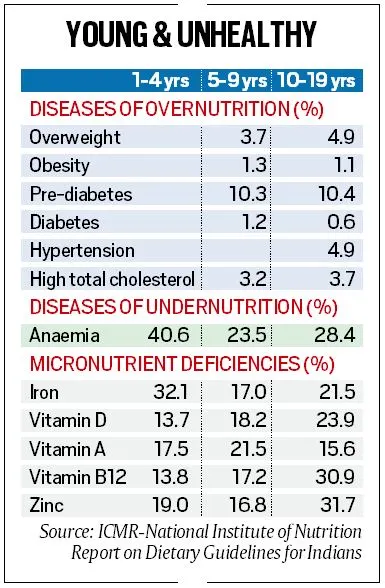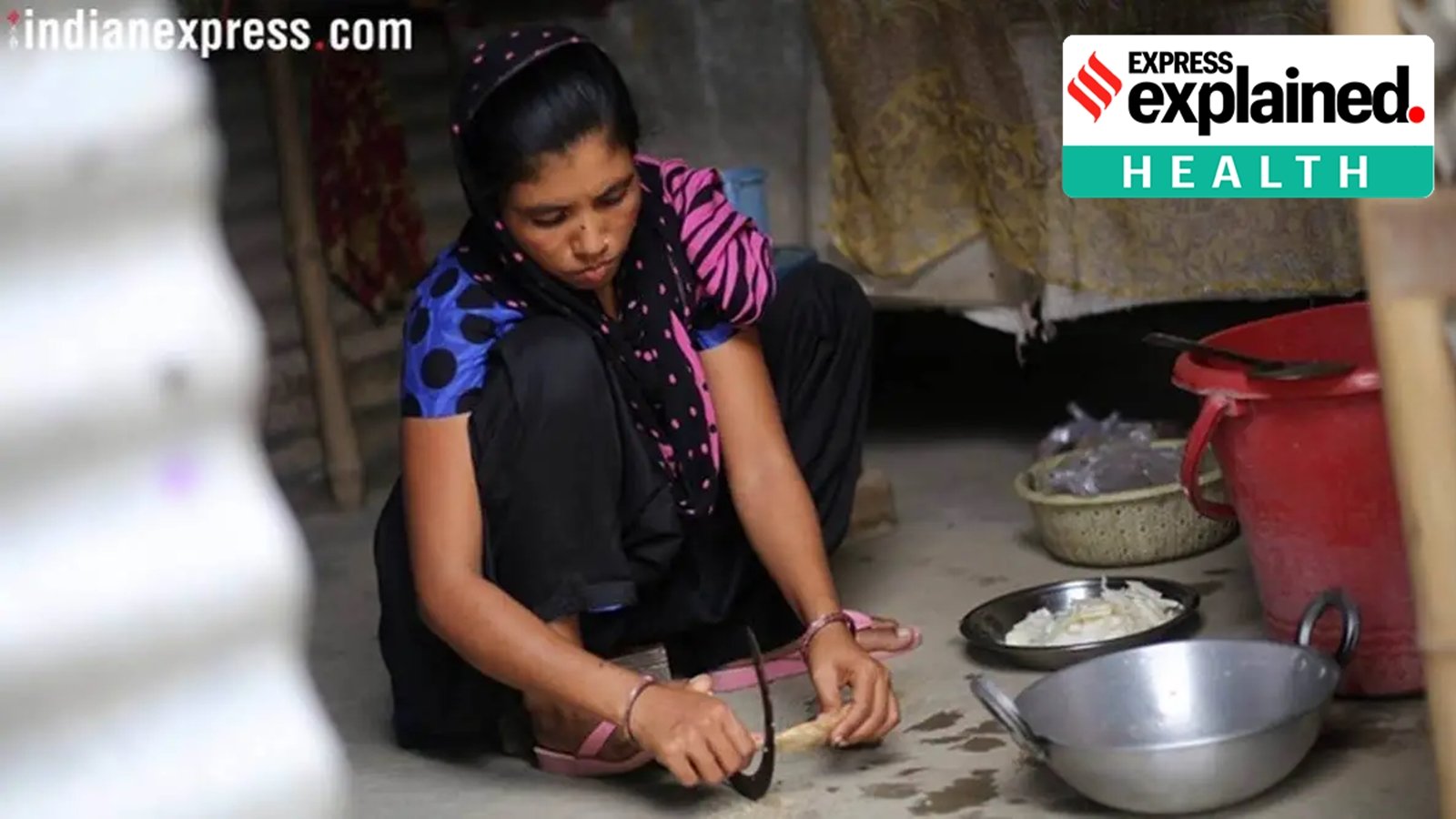At a time when non-communicable diseases (NCDs) such as cardiovascular diseases, cancer and diabetes are on the rise, affecting even adolescents and children, the Prime Minister of India said: nutrition The research institute has published comprehensive guidelines on the diet of vulnerable groups, including pregnant and lactating women, children and the elderly.
Guidelines issued by the National Institute of Nutrition (NIN), Hyderabad, which works under the Indian Council of Medical Research (ICMR), recommend that consumption of salt and highly processed foods (such as packaged potato chips, cookies, and pantry foods) It also stipulates general principles such as reducing the amount. bread, ketchup, candy, etc.).
According to the guidelines, an estimated 56.4% of India’s total disease burden can be attributed to unhealthy diets. A healthy diet and physical activity prevent 80% of type 2 diabetes and significantly reduce the burden of heart disease and high blood pressure.
Children, focus on mothers
Optimal nutrition for mother and child from conception to two years of age leads to proper growth and development. All forms of nutritional deficiencies, including micronutrient deficiencies and obesity, can be prevented.
The report cites the 2019 National Comprehensive Nutrition Survey, which shows that even children have a high incidence of lifestyle-related diseases. Approximately 5% of children and 6% of adolescents aged 5 to 9 years were overweight or obese, almost 2% of children and adolescents were found to have diabetes, and a further 10% were found to be prediabetic. .

The study found that 37.3% of children aged 5 to 9 years and 19.9% of pre-teens and teens aged 10 to 19 years had high levels of bad cholesterol (LDL and triglycerides). A quarter of all children and adolescents had low levels of good cholesterol.

dual nutrition challenge

The incidence of micronutrient (zinc, iron, vitamin) deficiencies ranged from 13% to 30% in children aged 1 to 19 years. Ideal dietary charts recommended for different groups of people take into account both micronutrient deficiencies and diseases caused by overnutrition.
Although severe malnutrition such as marasmus (deficiency of macronutrients such as carbohydrates and protein) and kwashiorkor (deficiency of protein) have disappeared from the country, conditions such as anemia persist, the report said. According to the study, the prevalence of anemia was 40.6%, 23.5%, and 28.4% for children under 5 years of age, 5 to 9 years of age, and 10 to 19 years of age, respectively.
A study on malnutrition published in The Lancet earlier this year said that while India remains undernourished, obesity has increased significantly over the past 30 years.
Faulty dietary patterns, in which unhealthy, highly processed, high-fat, sugar, and salt (HFSS) foods have become more affordable and available than healthier alternatives, have led to iron and folate deficiencies. “The prevalence of overweight and obesity is high among population groups, leading to anemia and poor health,” the report said.
General dietary principles
The guidelines recommend getting the nutrients you need from at least eight food groups, including vegetables, leafy greens, root vegetables, tubers, dairy products, nuts, and oils. Consumption of grains, which are a staple of the Indian diet, should be limited so that grains only provide 45% of total energy (instead of the current 50-70%. Instead, more protein (pulses, meat, , chicken, fish), accounting for 14% of your total daily energy (currently only 6-9%).
Achieving adequate levels of essential polyunsaturated fatty acids (PUFA) and B12 is a challenge for vegetarians. The guidelines recommend consuming flaxseeds, chia seeds, walnuts, vegetables, and green leafy vegetables.
The report states that salt intake should be limited to 5g per day and strongly recommends avoiding highly processed foods that are high in fat, salt and sugar.
Group-specific guidelines
Pregnant women: Small frequent meals for people experiencing nausea and vomiting. Guidelines recommend eating fruits and vegetables, especially those high in iron and folic acid.
Infants and children: For the first 6 months, infants should be fed only breast milk and not honey, glucose, or diluted milk. No need to water even in hot weather. After 6 months of age, supplementary foods should be included.
Elderly: Older adults need to consume foods rich in protein, calcium, micronutrients, and fiber. You should consume at least 200-400 ml of low-fat milk or dairy products, a fistful of nuts and oilseeds, and 400-500 g of vegetables and fruits, apart from legumes and cereals that are at least one-third whole grains. there is. . Exercise is important to maintain bone density and muscle mass.
© Indian Express Private Limited
Originally uploaded to: October 5, 2024 06:50 IST


